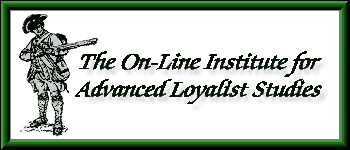

|
 |
A History of the Guides & Pioneers |
|
The Guides & Pioneers was a unique corps raised in December of 1776 at New York City. It passed through a succession of commanders, including two foreigners: Captain Andreas EMMERICH of Germany, Major Samuel HOLLAND of New York, Captain (Major) Simon FRASER of the 71st Regiment, Colonel Beverly ROBINSON of the Loyal American Regiment, and Major John ALDINGTON of New Jersey. The corps never consisted of more than five companies and seldom contained more than 150 men at one time. A large number of the men were from Westchester County, New York, but it included small numbers of men from many of the provinces, including the South. Some of the officers and men were also drafted from the New Hampshire Volunteers (Stark's Corps) at Philadelphia in December of 1777. The regiment served in detachment strength at many of the outposts at New York as well as in several forays and campaigns. Some were in the Danbury, Connecticut raid of April, 1777. Many were on the Philadelphia Campaign of 1777. A large detachment served in the Charlestown Campaign of 1780, returning to New York in June of 1780, but leaving a small detachment in South Carolina. Other detachments left for the South under Generals LESLIE, ARNOLD and PHILLIPS. Some were captured at the Siege of Yorktown in 1781. A number of gentlemen were given commissions in the corps as lieutenants and captains who did not actually serve with the unit. These people had acted in the secret service or in other dangerous ways and had been given commissions to protect them in case of capture, the hope being that commissioned officers were less likely to be hanged as spies. Other officers in the unit acted more as engineers, surveyors and draftsmen. The term "pioneer" is an 18th Century word for military laborer. Sir Henry CLINTON, the British Commander in Chief, described the unit in a December 15, 1779 letter to Lord George GERMAIN: A Body of [Loyalists] whose Age and information with regard to the Country render their active Services desireable, are formed under a Gentleman of most respectable character (Colonel ROBINSON) into a Corps of Guides and Pioneers. The service of these persons is frequently called for, and is ever chearfully given: I shall not however disguise to your Lordship that Several Officers are in this Class from whom there is little probability of deriving any advantage. It is often more satisfactory to themselves, and excites less jealousy in others, that they be supposed in real Employment and not receiving a bare Elymosinary Subsidy. Source: Great Britain, Public Record Office, Headquarters Papers of the British Army in America, PRO 30/55/2482. The company commanders of the corps were Captain (and later Major) John ALDINGTON, Captain Peter McPHERSON, Captain Samuel LINDSAY, Captain Francis FRASER, Captain William McALPINE and Captain Jonathon WILLIAMS. The corps, consisting of 100 officers and men plus 103 dependents, embarked for the River Saint John on 12 September 1783 where they were disbanded on 10 October 1783.
Click here for ---> Regimental History Main Page More Guides & Pioneers History
The On-Line Institute for Advanced Loyalist Studies
|